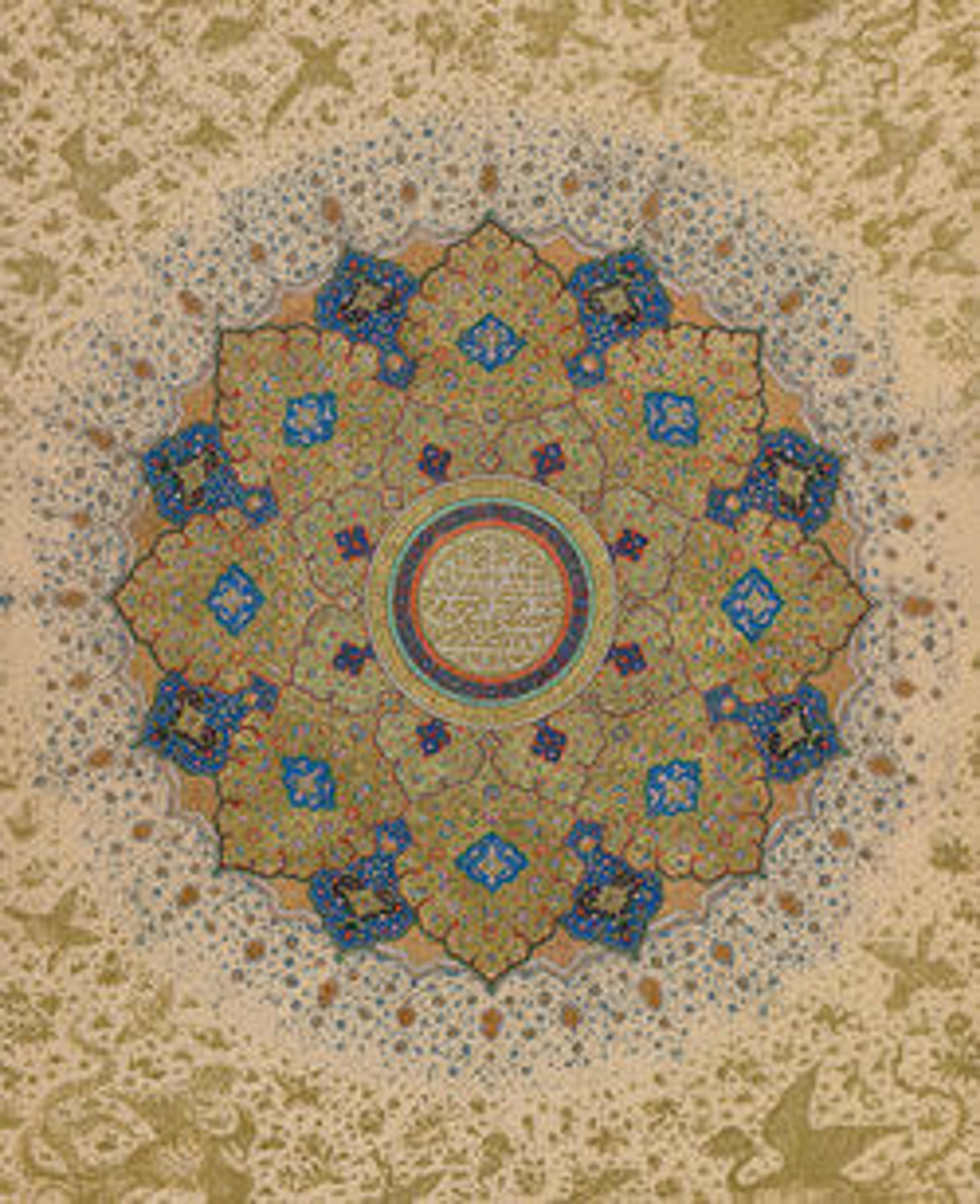Textile Depicting a Scene from Nizami's Khamsa
The imagery seen on this exquisitely woven cloth suggests the theme of love. The romance of King Khusrau and Princess Shirin, immortalized by the poet Nizami, is illustrated here, with the princess shown on horseback and the sculptor Farhad, hopelessly in love with Shirin, hacking a cleft in the mountain with his axe to bring his beloved a refreshing drink. Interspersed vertically and horizontally with these and other pictorial elements are cartouches filled with verses of unidentified authorship:
The splendor of your figure comes from beauty
It has given life to this outer cloak
There has never been a garment of such beauty
One might say it has been woven from the threads of your soul.
The splendor of your figure comes from beauty
It has given life to this outer cloak
There has never been a garment of such beauty
One might say it has been woven from the threads of your soul.
Artwork Details
- Title: Textile Depicting a Scene from Nizami's Khamsa
- Author: Nizami (present-day Azerbaijan, Ganja 1141–1209 Ganja)
- Date: 16th–17th century
- Geography: Attributed to Iran
- Medium: Silk, metal wrapped thread; double-weave
- Dimensions: Textile:
L. 25 3/4 in. (65.4 cm)
W. 14 3/8 in. (36.5 cm)
Mount:
H. 29 1/2 in. (74.9 cm)
W. 18 in. (45.7 cm)
D. 2 1/4 in. (5.7 cm)
Wt. 8 lbs. (3.6 kg) - Classification: Textiles-Woven
- Credit Line: Fletcher Fund, 1946
- Object Number: 46.156.7
- Curatorial Department: Islamic Art
More Artwork
Research Resources
The Met provides unparalleled resources for research and welcomes an international community of students and scholars. The Met's Open Access API is where creators and researchers can connect to the The Met collection. Open Access data and public domain images are available for unrestricted commercial and noncommercial use without permission or fee.
To request images under copyright and other restrictions, please use this Image Request form.
Feedback
We continue to research and examine historical and cultural context for objects in The Met collection. If you have comments or questions about this object record, please contact us using the form below. The Museum looks forward to receiving your comments.
